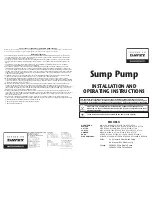
6 Language Dictionary
106
Series N6700 User’s Guide
*RDT?
This query returns a description of the output channels installed in a
mainframe. Semicolons separate multiple channel descriptions.
Field Information
CHAN <c>
description
Channel number
Description of the output channel
*RST
This command resets the volatile memory of the power system to a
factory-defined state (see “*RST Settings” at the beginning of this
chapter).
*RST also forces the ABORt:ACQuire and ABORt:TRANsient
commands. This cancels any measurement or output trigger actions
presently in process, and resets the two WTG bits in the Status
Operation Condition register.
*SAV <state>
CAUTION
This command causes a write cycle to nonvolatile memory. Nonvolatile memory
has a finite maximum number of write cycles. Programs that repeatedly cause
write cycles to nonvolatile memory can eventually exceed the maximum
number of write cycles and cause the memory to fail.
This command stores the present state of the power system to the
specified location in non-volatile memory. Up to 2 states can be
stored - in locations 0 and 1. Any state previously stored in the same
location will be overwritten. Use the *RCL command to retrieve
instrument states. Refer to “*RST Settings” at the beginning of this
chapter for a list of instrument settings that can be saved.
If a particular state is desired at power-on, it should be stored in
location 0. It will then be automatically recalled at power turn-on if
the Output Power-On state is set to RCL0.
Note that list data (and the calibration state) is not saved as part of
the *SAV operation. This means that all list data that is sent to the
instrument will be lost when the power system is turned off.
Also, data saved in non-volatile memory, described in the Non-
volatile Factory Settings table at the end of chapter 3, is not affected
by the *SAV command.
*TST?
This query causes the power system to do a self-test and report any
errors. A 0 indicates the power system passed self-test. A 1 indicates
one or more tests failed. Selftest errors are written to the error queue
(see Appendix D). Note that *TST? also forces an *RST command.
Summary of Contents for N6700B
Page 1: ...A A A A Agilent Technologies Modular Power System Series N6700 User s Guide...
Page 28: ......
Page 160: ......
Page 168: ......
















































